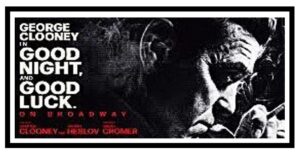A person “on the spectrum” would hardly recognize Kennedy’s characterization of it.
In a press conference earlier this month Robert F. Kennedy Jr. had more bad advice to offer on the nature and causes of autism, or what used to be known as Asperger’s Syndrome. The Health and Human Services Secretary mischaracterized autism as a “preventable disease” and unfairly stigmatized those who are on the spectrum. Not only do these neurodivergent people supposedly suffering with a dire condition, but “many” were once “fully functional,” but later “regressed” because of some sort of “environmental exposure.” These false claims were bad enough, but then he launched into a whole cluster of slights:
“These are kids who will never pay taxes. They’ll never hold a job. They’ll never play baseball. They’ll never write a poem. They’ll never go out on a date,” Kennedy said. “Many of them will never use a toilet unassisted. And we have to recognize we are doing this to our children, and we need to put an end to it.”
Oh, and autism supposedly “destroys families.”
The Trump administration playbook always seems to trivialize the complex, reaching too far for single and simple solutions. We currently have junk economics draining away American credibility. It is as much a disgrace for a health official in this country to pedal junk science. A person labeled with the slippery and still bewildering indicators of autism would hardly recognize Kennedy’s characterization of it. His suggestion that he will soon set us all straight is disingenuous, given years of substantial research that has already been done.
 As the name suggests, Autism Spectrum Disorder comes in a vast array of behavioral and social responses deemed “unusual,” “obsessive,” or socially isolating. It is a highly variable condition that shows itself in different forms of thinking and relating to others. There are often mild manifestations of it that require nothing more than the understanding of others. Severe instances of speech or cognitive disruption may require more help. In addition, repetitive behaviors and picking up social cues can be a challenge. And noise or the operations of some machines may be bothersome. Even so, there are people on the spectrum who own businesses, hold advanced degrees, marry, and do advanced research. To be sure, at its onset at age 2 or 3 autism can create challenges to a caregiver. Children especially struggle to find the kinds of social skills and connections that are rewarding. But with age, most learn to cope with the consequences of this condition reasonably well, and would be offended by Kennedy’s disablism.
As the name suggests, Autism Spectrum Disorder comes in a vast array of behavioral and social responses deemed “unusual,” “obsessive,” or socially isolating. It is a highly variable condition that shows itself in different forms of thinking and relating to others. There are often mild manifestations of it that require nothing more than the understanding of others. Severe instances of speech or cognitive disruption may require more help. In addition, repetitive behaviors and picking up social cues can be a challenge. And noise or the operations of some machines may be bothersome. Even so, there are people on the spectrum who own businesses, hold advanced degrees, marry, and do advanced research. To be sure, at its onset at age 2 or 3 autism can create challenges to a caregiver. Children especially struggle to find the kinds of social skills and connections that are rewarding. But with age, most learn to cope with the consequences of this condition reasonably well, and would be offended by Kennedy’s disablism.
Kennedy is into the weeds from the start
Naming autism as a “disease” is misleading, and—like other forms of behavior that have been medicalized—takes many people out of the game. It suggests that individuals cannot be agents of their own adaptation. Many folks on the autism scale are doing fine as they are. And some familiar features of autism, such as giving extensive attention to one thing, or seeing obscure patterns or relationships, can be useful capacities that those of us who are hopelessly distracted may never acquire. It is a common idea among autism researchers that Sherlock Holmes would probably have been considered on the spectrum, and perhaps Albert Einstein as well. Well-known animal researcher and author Temple Grandin notes that she still cannot “read” others well, but her awareness of this challenge has helped her adapt and thrive.
Differences Versus Deficits
Most of all, broad generalizations are risky. While some neuroscientists see what they consider to be unusual patterns of brain activity in autistic people, the causes and symptoms are not always accepted as representing a distinct condition to be treated. There are no definitive indications that “deletions” of genetic material causes autism. And evidence in favor of possible environmental causes is suspect. This murky etiology along with the wide spectrum of behavioral effects of autism has led some to question whether milder forms are really separate conditions at all; they may simply be manifestations of natural neurodiversity. In this view, what is called autism may point to natural differences, but not necessarily deficits.
Then, too, I believe that our modern other-directed communication has been “normed” into American life, especially among families who believe they understand the social intricacies of “getting ahead.” We often assume the worst for children left to the kinds of unstructured and solitary play that was the norm in previous centuries. This may be one reason that autism’s isolation and social awkwardness are relatively new disorders. Eccentricities that were once “understood”—sometimes with compassion, and at other times with institutional isolation—are now subject to intense study, and sometimes premature interventions. It’s easy to sympathize with Liane Willey, who notes in her book, Pretending to be Normal, “I do not wish for a cure to Asperger’s Syndrome. What I wish for, is for a cure for the common ill that pervades too many lives; the ill that makes people compare themselves to a normal that is measured in terms of perfect and absolute standards.”
______
Portions adapted from the writer’s, The Rhetorical Personality (2010).

 The play is a timely and generous act of public service by the 63-year-old film actor.
The play is a timely and generous act of public service by the 63-year-old film actor.